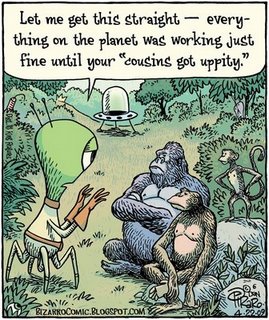It’s Jam Band Friday – http://www.youtube.com/watch?v=4Gpdz8INFBg
So we end this meditation where we have been for 3 days on building a house that does what it should, make your life cheap and comfortable. This all started with an Energy Audit. Could that get you to build a better home in the future? Sure it could. It just depends on how important the planet Earth is to you. It is very important to me. Other people think of it as their personal toilet.
http://www.fastcompany.com/blog/kit-eaton/technomix/your-future-homes-roof-will-be-eco-friendly-too
Your Future Home’s Roof Will Be Eco-Friendly Too
BY Kit EatonFri Oct 9, 2009
Scientists at MIT have invented a smart roofing material that takes a new thermal-management approach to eco-design. It’s a different approach to previous efforts, of which there are many. We’ve rounded them up for you, starting with the latest, below.

MIT’s Black and White Solution
MIT’s Thermeleon material is a composite of layers that makes it thermochromic–on exposure to heat it changes color from black to white. It works by sandwiching a common polymer between flexible plastic layers, with a black one at the back–when cold the polymer solution stays dissolved and the black rear face shows through, and when it heats up the solution condenses to form light-scattering droplets.
The upshot is that when the sun is shining a roof tile covered in the material is white-colored, scattering up to 80% of the sunlight back and thus keeping the building beneath the roof cooler. The result is a 20% reduction in cost to keep the interior at a comfortable temperature in the summer, a figure which also comes with an eco-friendly drop in the electricity supply demands. During winter, of course, you’d prefer your roof to capture as much heat as possible from the sun, which is where the black coloring is handy–the tiles scatter just 30% of incoming solar radiation then.
The team’s working on micro-encapsulating the chemicals, so that in future they may work as a paintable or spray-on coating, and then if the prices drop to match the innovation, the tech could also find much use in the developing world
:}
( http://www.youtube.com/watch?v=hs8HcICxzAU&feature=related )
Why haven’t we done things like this for years:
Dow Chemicals’ Covert Solar Tiles
If your house design calls for a shingled roof instead of a tiled one, and you live in an area where theft of expensive roof-top solar panels is a problem, then Dow Chemicals has a neat trick.
Its Solar Shingles use thin-film copper indium gallium diselenide technology to make them cheap and light, and they’re designed to be intermingled with traditional asphalt roof tiles on a roof. That makes for easy installation, and lower visibility to street-level thieves.

And there you have it: Proof positive that in the future, our building roofing will do much more for us than keeping the sun, wind, and rain off our heads. They all make good sense, of course, since traditional roofs spend all their time staring at the sun rather than harnessing its rays for energy. Now if there were only a clever hybrid of all these different ideas…
:}
With credits to:
http://www.physorg.com/news174209373.html
and
http://www.physorg.com/news174209373.html
:}
( http://www.youtube.com/watch?v=QQyt_xy2mMQ&feature=related )
Then there is the really far out stuff:
http://www.telegraph.co.uk/earth/earthnews/3351863/Eco-tree-houses-the-homes-of-the-future.html
Eco tree houses – the homes of the future
By Louise Gray, Environment Correspondent
Published: 5:00PM BST 16 Sep 2008
A model of the proposed tree house (left) and an illustration of how one might look (click to enlarge)
Tree houses grown specifically for modern living could be the eco-homes of the future.
Scientists from the US and Israel have developed the trees that can be shaped into the structure of innovative homes.
The ingenious tree houses naturally provide shade and can also be used to process waste and reduce carbon emissions.
The researchers at Tel Aviv University and a branch of the Massachusetts Institute of Technology are confident the first prototype home could be ready in just ten years.
Plantware, the organisation behind the technology, have already built bus-shelters, park benches and traffic lights using the advanced techniques of airoponics, where plants are grown without soil.
Now they have built a model for a tree house to be used in cities.
The extraordinary structure is build from actual tree roots that are grown to be mallable and then hardened into a structure like steel girders. The houses can be equipped with solar panels and wind turbines to generate electricity and even convert human waste into valuable nutrient for the living tree.
Different species of trees could be chosen for different environments so for example, willows could be used in England and giant American redwoods in California.
However at the moment the tree homes would be prohibitively expensive to all but a few.
:}
( http://www.youtube.com/watch?v=tqUTB5bflCM&feature=related )
This is a really long article so I will get you started and list the 3 architects. Watch out the prices will kill you, but you can do the same things without the expense.
http://property.timesonline.co.uk/tol/life_and_style/property/new_homes/article3203472.ece
From The Sunday Times
January 20, 2008
Building the future: eco-architecture
Home gave three leading eco-architects different budgets and one brief: to create a sustainable urban family dwelling. Our correspondent is impressed by the result
So, you want a stylish green home, but think it will cost the earth? Think again. Home asked three leading exponents of sustainable design to come up with the ultimate green new-build house to suit three very different budgets – and the results were spectacular.
All had the same brief: to design a home for a young part-time teacher and her husband, an IT specialist. The imaginary couple have two children, aged nine and seven, and own an end-of-terrace plot on a tree-lined street of Victorian houses. The house can’t be taller than neighbouring three-storey homes, and must be as green as possible.
Dan Burr, 40, an associate partner at Sheppard Robson, which has offices in London and Manchester, has come up with a three-bedroom, 1,500 sq ft home costing £250,000 (plus land costs). Burr was the design director on Britain’s first zero-carbon house, the Lighthouse, built in Watford last year. The building meets level 6 of the Code for Sustainable Homes, with which all new homes in Britain will have to comply by 2016.
Justin Bere, 48, principal of the north London-based firm Bere Architects, designed a four-bedroom, 1,800 sq ft home costing £400,000 (plus land costs). His residential projects include Focus House, built in 2006 in Finsbury Park, north London, which won the Riba London Region Award 2007, among other prizes. His practice is a devotee of PassivHaus, an established German style of energy-efficient construction.
The third property is a five-bedroom, 2,500 sq ft home costing £600,000, designed by the husband-and-wife team Catherine Burd and Buddy Haward, both 41. Based in northwest London, they devised the low-energy Brooke Coombes House, in Ealing, west London, which in 2002 won the Riba Manser Medal, and are designing 600 sustainable homes in the Rochester Riverside scheme at Thames Gateway.
Their EZ House has three key principles: its construction must incorporate local materials from sustainable sources and low-energy build methods; it must consume little or no energy, so conserve or generate it on site; and the flexible design must have non-load-bearing internal walls, so that it can be adapted to the changing needs of the occupants
The sectional house
£250,000
Sheppard Robson: 020 7504 1779, www.sheppardrobson.com
The PassivHaus
£400,000
bere:architects: 020 7837 9333, www.bere.co.uk
The EZ House
£600,000
Burd Haward: 020 7722 0788, www.burdhaward.com
:}
Next week I go back to the environment. So much has been happening on the energy and the environment front that I have been dieing to print but…well meditations go where ever they will.
http://www.youtube.com/watch?v=u7pHo9amiZY&feature=related
:}














